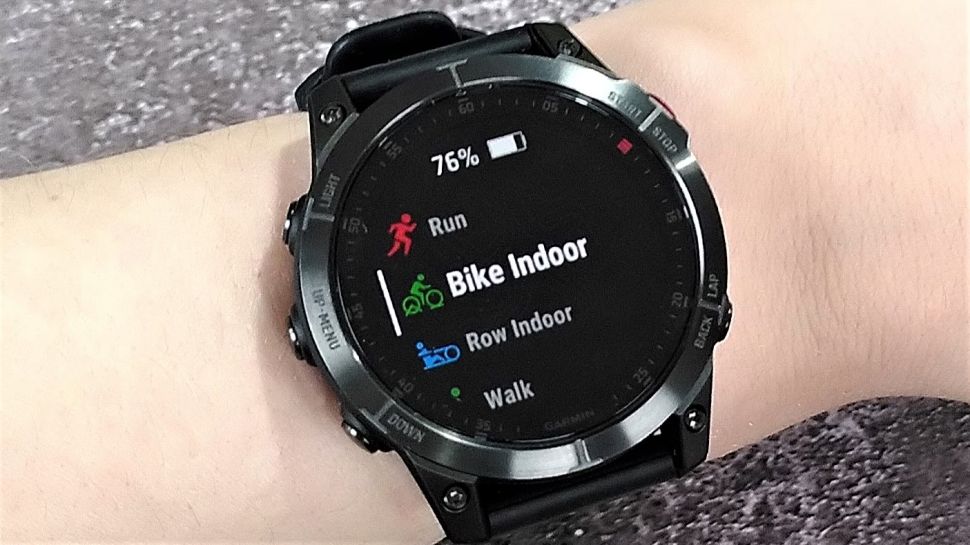
It looks like another Garmin sports watch is on the way, judging by recent listings on various government websites, but what new features will it bring to the table? Improved screens with higher resolutions and more responsive touch controls are always welcome, as are additions like multi-band GPS and updated biometric sensors, but there are many other tools we'd like to see added to the mix.
1. Nap tracking
This is one feature I'm genuinely surprised Garmin doesn't offer yet, and it's something rival sports watch maker Amazfit has offered for years. While setting up a Garmin watch, you'll be prompted to enter the approximate times you tend to fall asleep and wake up, and the watch uses this data together with movement (detected by the accelerometer) and changes in heart rate and HRV to determine when you've nodded off.
However, it doesn't usually pick up naps taken outside these hours, and if it does, they're later overwritten by your nightly slumber. By contrast, Amazfit devices not only pick up your power naps, they include them in your rest and recovery metrics, give you praise if you kept them brief, and give you a little warning if you dozed off too close to bedtime.
Garmin watches don't play nicely with polyphasic sleep for the same reason, which is a shame for people who find that breaking their sleep into blocks works well.

2. Smart alarms
This is a feature that's been available in Fitbit devices for years now, but for some reason still isn't available in even the best Garmin watches. The idea is that you feel more refreshed when you're woken during light sleep than REM or deep sleep, and it's easier to get up and face the day.
A smart alarm allows you to set a time by which you want to be awake, then monitors your sleep patterns for 30 minutes beforehand and wakes you gently when it detects that you've entered a phase of light sleep. If you're still in deep or REM sleep when your wake-up time rolls around, the watch will wake you anyway to make sure you don't oversleep (often with a gentle vibration).
3. Resume activity reminders
Even the best GPS watch can't instantly detect the moment you've stopped running to cross a road or grab an energy gel, so many of us end up pausing activity tracking manually to ensure our stats are as accurate as possible.
All the latest inspiration, tips and guides to help you plan your next Advnture!
The problem is, we're only human, and it's all too easy to forget to resume tracking when we're back on the move. We'd like to see a new feature that prompts us to resume tracking 30 seconds after we've hit pause, or when the watch detects that we've begun moving again at speed.

4. Blood pressure monitoring
A recent update for the Garmin Connect mobile app appeared to suggest that the company is planning to release its own blood pressure monitor. This would be an interesting addition that would sit alongside the company's smart scales, but ideally we'd like to be able to check our blood pressure without inflating a cumbersome cuff.
Some other sports watches, such as the Samsung Galaxy Fit 2, offer a form of blood pressure monitoring that works using the same optical sensor that's used to track your heart rate. They do this by calculating pulse transit time, which is the time between your heart beating and the pulse of blood reaching your extremities. If your arteries have been hardened by plaque, they will be less able to stretch, blood will take longer to reach your wrist, and your blood pressure is likely to be higher.
However, that form of monitoring isn't exact; it can only tell you about trends rather than give you actual numbers, and has to be calibrated using a conventional blood pressure monitor with an inflatable cuff anyway.
We're hoping that Garmin will incorporate the 'lab on a chip' that's been developed by Rockley Photonics into a future smartwatch. This uses light spectroscopy to track multiple biomarkers, including blood pressure, core body temperature, blood glucose, and much more – all more accurately than current wearable devices.
5. Voice controls
So far, the only Garmin watch with a microphone is the Venu 2 Plus, and it works brilliantly for controlling your phone's virtual assistant and taking calls on your wrist. It could do so much more though, and the ability to start or pause an activity using only a spoken command, or check a particular stat hands-free, would be a real boon for future devices.
Just more devices with microphones would be a great starting point, though. When testing the Venu 2 Plus for Advnture's sister site TechRadar, I found myself using Google Assistant much more often than I would otherwise, and you don't realize just how handy it is until you've tried it.
- Garmin Forerunner 255 vs Garmin Forerunner 955: choose your next watch

Cat is the editor of Advnture, She’s been a journalist for 15 years, and was fitness and wellbeing editor on TechRadar before joining the Advnture team in 2022. She’s a UK Athletics qualified run leader, and in her spare time enjoys nothing more than lacing up her shoes and hitting the roads and trails (the muddier, the better), usually wearing at least two sports watches.
